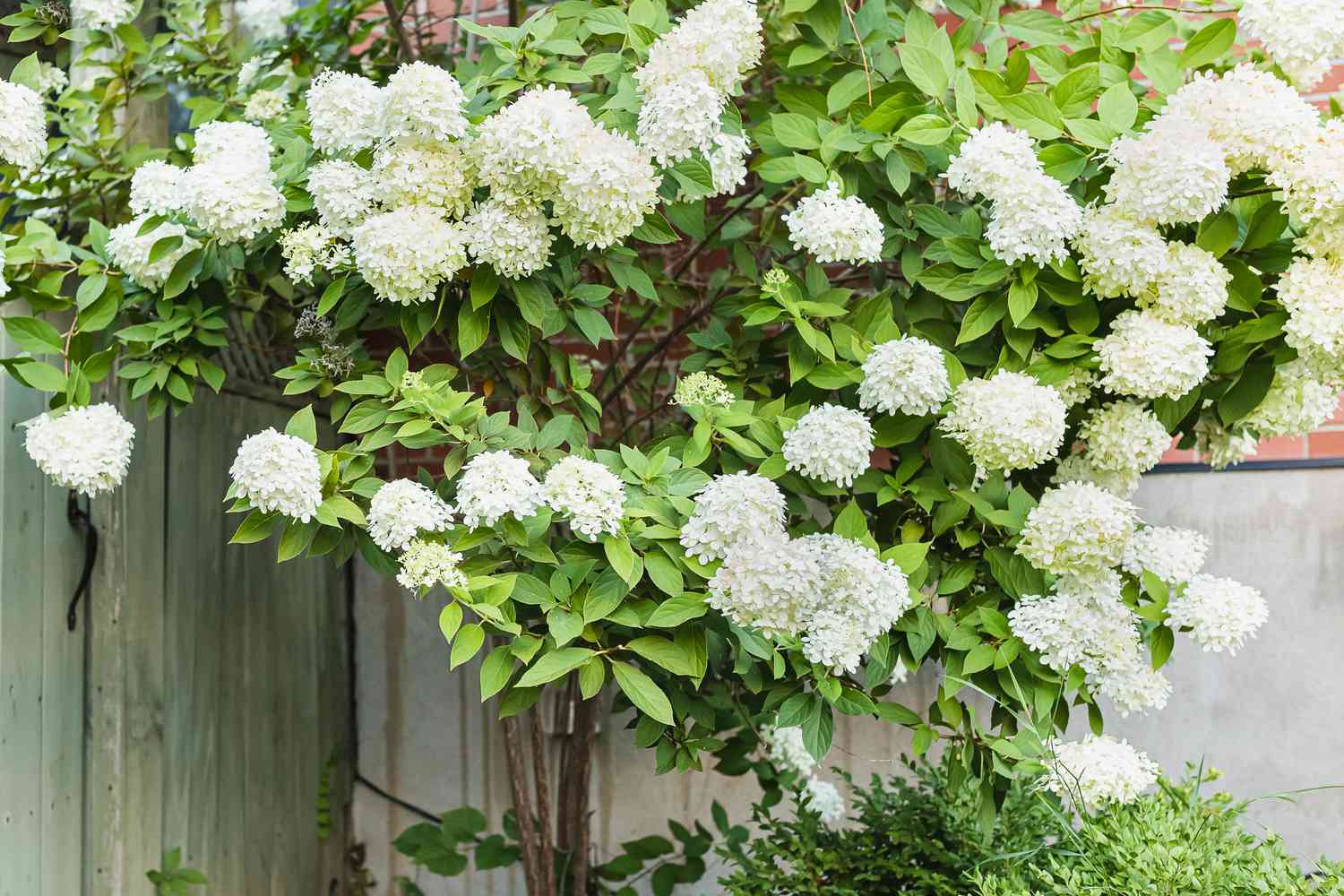
Introduction
White flowering trees are a sight to behold, with their delicate blooms adding a touch of elegance and tranquility to any landscape. From the stunning Yoshino Cherry to the majestic Magnolia, these trees offer a diverse array of options for gardeners and landscapers alike. In this comprehensive guide, we’ll explore the world of white flowering trees, providing tips on identification, growing conditions, and the best varieties for your garden.
Types of White Flowering Trees
Spring-Blooming White Flowering Trees
- Apple Serviceberry (Amelanchier x grandiflora)
- Small tree with white, 5-petaled blooms in clusters
- Edible purple berries
- Bradford Pear (Pyrus calleryana)
- Small to medium tree with clustered, malodorous flowers
- Yellow/brown pome fruit
- Canada Plum (Prunus nigra ‘Princess Kay’)
- Small tree with large flower clusters on red pedicels
- Edible, orange/red, ellipse-shaped drupes
- Carolina Silverbell (Halesia tetraptera)
- Small to medium tree with bell-shaped flowers in drooping clusters
- Dry drupes
Summer-Blooming White Flowering Trees
- Crape Myrtle (Lagerstroemia)
- Shrub-like tree with a long blooming season
- Diverse varieties with different mature sizes and bloom colors
- Fringe Tree (Chionanthus virginicus)
- Deciduous tree with delicate, fringe-like clusters of white flowers
- Blue-black drupes
- Kousa Dogwood (Cornus kousa)
- Small tree with showy, star-shaped bracts
- Edible, raspberry-like fruits
- Sweetbay Magnolia (Magnolia virginiana)
- Evergreen or semi-evergreen tree with fragrant, cup-shaped flowers
- Cone-like fruits with red seeds
Growing Conditions for White Flowering Trees
White flowering trees thrive in well-drained soil with ample moisture. Most varieties prefer full sun exposure, although some, like the Kousa Dogwood, can tolerate partial shade. When selecting a planting location, consider the mature size of the tree and ensure it has enough space to grow without interfering with structures or power lines.
Care and Maintenance
Proper care is essential for the health and longevity of white flowering trees. Regular watering, especially during the first year after planting, is crucial. Mulch around the base of the tree to retain moisture and suppress weeds. Prune in late winter or early spring to remove any dead or damaged branches and maintain the desired shape.
Pests and Diseases
White flowering trees are generally hardy, but they can be susceptible to certain pests and diseases. Common issues include aphids, scale insects, and fungal diseases like powdery mildew and leaf scorch. Regular monitoring and prompt treatment can help prevent and control these problems.
Benefits of White Flowering Trees
White flowering trees offer numerous benefits beyond their aesthetic appeal. They provide shade, help reduce energy costs by cooling the surrounding area, and can increase property values. Many varieties, such as the Fringe Tree and Kousa Dogwood, are also attractive to pollinators like bees and butterflies, supporting local ecosystems.
Top White Flowering Tree Varieties
- Yoshino Cherry (Prunus × yedoensis)
- Elegant, spring-blooming tree with delicate white flowers
- Upright, spreading habit
- White Dogwood (Cornus florida)
- Native tree with showy, white bracts in early spring
- Red fruits and vibrant fall foliage
- Southern Magnolia (Magnolia grandiflora)
- Evergreen tree with large, fragrant white flowers
- Glossy, leathery leaves
- Crape Myrtle (Lagerstroemia)
- Diverse varieties with long blooming seasons
- Interesting bark and fall foliage
- Sweetbay Magnolia (Magnolia virginiana)
- Fragrant, cup-shaped white flowers
- Tolerant of wet soils and partial shade
FAQs
What is the best time to plant white flowering trees?
The best time to plant white flowering trees is in early spring or fall when the weather is cool and the soil is moist.
How much sun do white flowering trees need?
Most white flowering trees require full sun exposure, meaning at least 6 hours of direct sunlight per day. Some varieties, like the Kousa Dogwood, can tolerate partial shade.
How often should I water my white flowering tree?
Water your white flowering tree regularly, especially during the first year after planting. The soil should be kept moist but not waterlogged. Adjust watering frequency based on weather conditions and the tree’s specific needs.
What is the average lifespan of a white flowering tree?
The lifespan of a white flowering tree varies depending on the species, but many can live for 50 to 100 years with proper care and maintenance.
Can white flowering trees grow in containers?
Yes, some dwarf or small-growing varieties, such as the Crape Myrtle and Fringe Tree, can be grown in large containers. However, most white flowering trees require ample space for their roots and will eventually outgrow a container.
Summary Table
| Tree Name | Scientific Name | Mature Height | Bloom Time | USDA Hardiness Zone |
|---|---|---|---|---|
| Yoshino Cherry | Prunus × yedoensis | 30-50 ft | Spring | 5-9 |
| White Dogwood | Cornus florida | 20-30 ft | Spring | 5-9 |
| Southern Magnolia | Magnolia grandiflora | 60-80 ft | Summer | 7-9 |
| Crape Myrtle | Lagerstroemia | 15-30 ft | Summer | 6-9 |
| Sweetbay Magnolia | Magnolia virginiana | 40-60 ft | Summer | 5-9 |
For more detailed information on white flowering trees, you can visit the United States National Arboretum website.
Conclusion
White flowering trees are a timeless addition to any garden or landscape, offering beauty, shade, and ecological benefits. By understanding the different varieties, growing conditions, and care requirements, you can select the perfect white flowering tree for your outdoor space. Whether you prefer the delicate blooms of the Yoshino Cherry or the fragrant flowers of the Magnolia, there’s a white flowering tree to suit every taste and landscape. Embrace the elegance and tranquility that these trees bring and transform your garden into a serene oasis.


